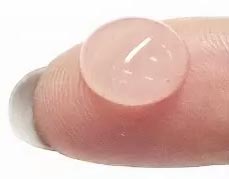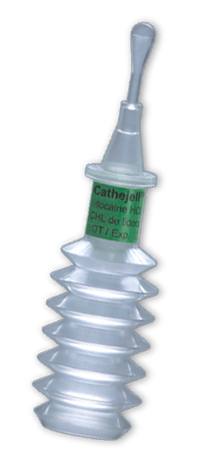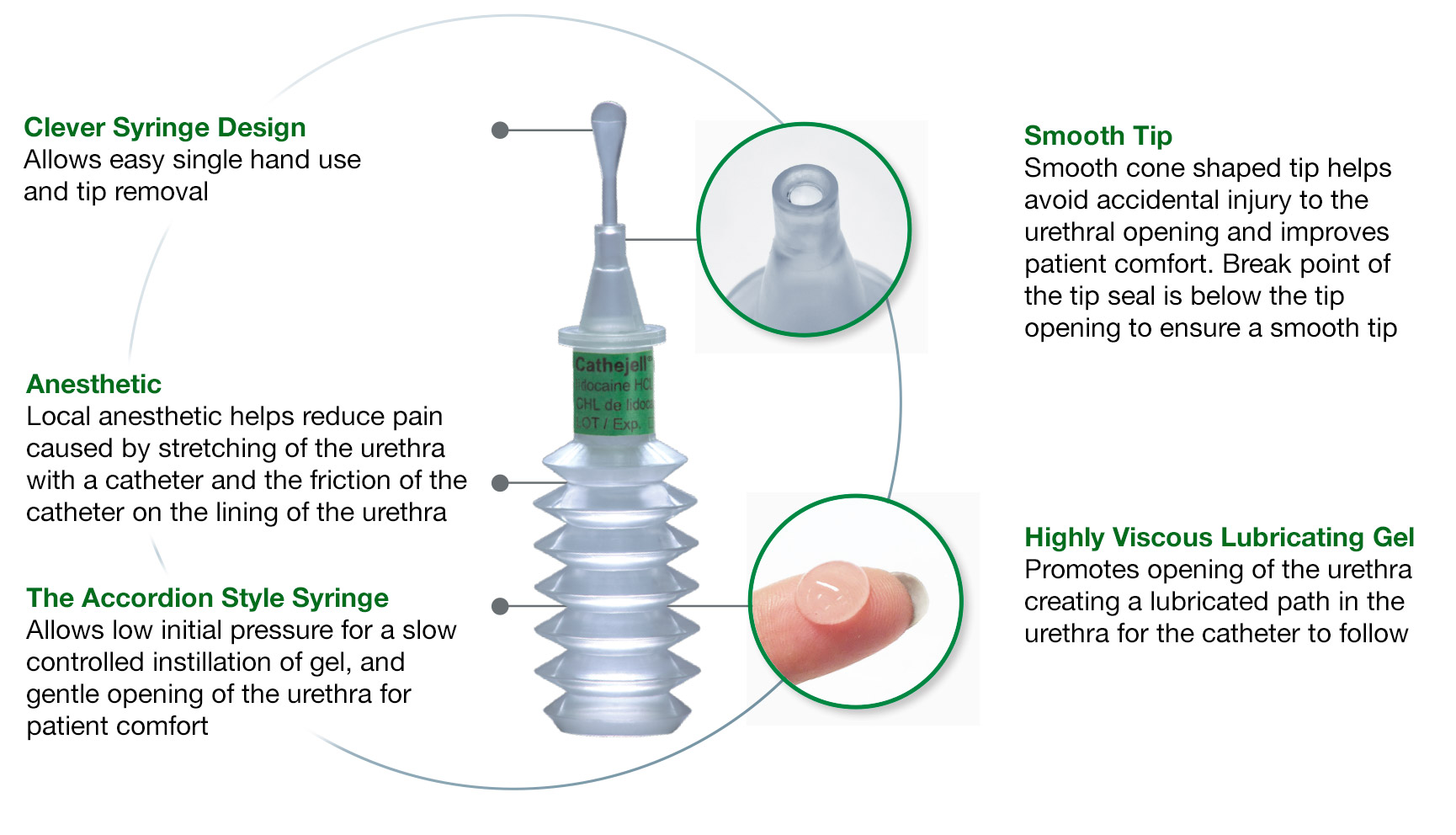Product Information
Key Features of a Good Urethral Lubricant
Cathejell high viscosity gel dilates the urethra and adheres to the urethral lining to ease catheter travel within the urethra. This means there is lubrication and anesthetic where you need it, all along the length of the urethra making it less likely to catch in the folds of the lining or in narrowed openings such as near the prostate in males.
Cathejell’s high viscosity gel will remain on the surface of instruments you apply lubrication to such as a cystoscope before a cystoscopy and not run off.

Benefits of Viscosity
- More viscous lubricating gel provides fuller and more uniform distension of urethra, reducing risk of tears and easing travel of catheter or scope through urethra
- More time and volume in contact with urethra lining offers better lubrication, more comfortable for patient and more time for analgesic to work
Syringe Pressure
Syringe pressure and the rate at which gel is instilled has a direct effect on patient comfort when instilling gel lubricant.1,2
- A comparative study demonstrated that distension of the urethra causes pain, and rapid distension causing more pain.1
- Study compared 2 sec instillation of gel versus 10 sec instillation time of gel and found significantly less pain with slower instillation which allows more time for the urethra to accommodate distension
This demonstrates the importance of Instilling a lubricating gel like Cathejell into the urethra and doing so slowly, since it gradually distends the urethral folds, reducing pain, while opening and filling the urethra with gel eases insertion of the catheter, and reduces the risk of injury.
Cathejell’s unique accordion style syringe was designed specifically to allow a controlled slow, low pressure instillation rate of gel into the urethra resulting in a more gradual distension of the urethra and lowering the risk of pain.

Slower gel instillation = significantly less pain
Cathejell‘s accordion syringe is designed for slow gel instillation
- Tzortzis et al, Intraurethral Lubricants-a Critical Literature Review and Recommendations, J of Endourology, vol 23, Number 5, May 2009 p821-826

Benefits of Instillation With an Anesthetic Lubricating Gel
The addition of an anesthetic to a urethral lubricating gel helps minimize pain caused by the stretching of the urethra and friction of the catheter on the lining of the urethra.1,2
Cathejell contains an anesthetic, 2% lidocaine hydrochloride, that allows for effective numbing of the lining of the urethra for prevention and control of pain when catheterizing the male and female urethra. Cathejell starts to work in three to five minutes with full numbing effect within five to 10 minutes after instillation into the urethra. It is possible to insert the catheter immediately after putting the lubricating gel in the urethra; however, if you do not wait the 5 minutes you may not get the full benefit of the anesthetic to numb the area and further reduce the risk of pain while inserting the catheter.
Studies Show Less Pain With Lidocaine Gel
Cystoscopy studies:1,2
- Show a significant decrease in moderate and severe pain when a lidocaine gel is used versus just a lubricating gel
- Use of a lidocaine gel found patients were 1.7 times less likely to have pain
Catheterization Studies2
- Patients rank urethral catherization among the top 3 most painful invasive procedures in hospitals
- The use of lidocaine lubricating gel reduced pain for most patients relative to lubricating gel alone

- Borch M et al, A Randomized Trial of 2% Lidocaine Gel Versus Plain Lubricating Gel for Minimizing Pain in Men Undergoing Flexible Cystoscopy, UROLOGIC NURSING / July-August / Volume 33 Number 4 page 1-7
- Aygin D, Usta E., The effect of lubricants used in indwelling bladder catheterization through urethra on procedure-related pain: a literature review, Int J Clin Exp Med 2017;10(2):1995-2005, www.ijcem.com
Cathejell®
Trusted by Doctors and Patients for 50 Years
Cathejell® Features & Benefits
Cathejell was designed to meet the needs of doctors and patients who wanted a product that was designed to be safe, easy to prepare and use, and more comfortable for the patient. For over 50 years Cathejell has delivered on that promise to doctors, nurses, and patients in hospitals and at home.
The unique accordion style syringe made it easier to control the rate of injecting gel into the urethra, making it more comfortable for the patient. That same design also allowed the convenience of opening the syringe and preparing it for use with the same hand, keeping it sterile.
Cathejell is a highly viscous, or thick, lubricant gel with an anesthetic, lidocaine, to reduce pain. By injecting a highly viscous lubricant gel directly into the urethra, it is possible to achieve a more even coating of lubricant on the lining of the urethra. The urethra is normally closed and is gently opened by the lubricating gel, which keeps the urethra open in front of the catheter. This provides an easy lubricated path for the catheter to follow to the bladder. This reduces the risk of pain and injury.

Cathejell Indications and Dosing
Cathejell Is Indicated For: Surface Anesthesia And Lubrication†
-
-
- For adult male and female urethra during catheterization, cystoscopy, exploration by sound, and other endourethral operations
- Nasal and pharyngeal cavities in endoscopic procedures such as gastroscopy and bronchoscopy
- Proctoscopy, rectoscopy
- Tracheal intubation
- Symptomatic treatment of pain in connection with cystitis and urethritis
-
Recommended Dose And Dosage Adjustment
| Dosage: Dose varies with area of application‡ | ||
|---|---|---|
| Usual Dosage | Maximum Dosage | |
| Adults | 5-20 g (½ – 2 syringes) |
40 g (4 syringes) |
| Children** | Varies as a function of age and weight | Up to 3 g/10 kg (⅓ syringe /10 kg) |
| No more than 40 g (4 syringes) in a 24-hour period for any age | ||
†Please refer to the Patient Information Leaflet
‡When fully compressed, each syringe expresses approximately 10 g of Cathejell® (9.4 mL, 200 mg lidocaine hydrochloride)
The amount expressed may vary with the technique used.
**Lidocaine should be used with caution in children younger than two years of age as there are insufficient data to support the safety and efficacy of this product in this patient population at this time.
References
-
-
- Tzortzis et al, Intraurethral Lubricants: A Critical Literature Review and Recommendations, Journal of Endurology, Vol 23, Number 5, May 2009 p 821-826
- Aygin D, Usta E, The effect of lubricants used in indwelling bladder catheterization through urethra on procedure-related pain: a literature review, Int J Clin Exp Med 2017;10(2):1995-2005, www.ijcem.com
-


 2476 Argentia Road, Suite 402
2476 Argentia Road, Suite 402 1.888.439.0013
1.888.439.0013 905.206.1413
905.206.1413 cathejell@biosyent.com
cathejell@biosyent.com